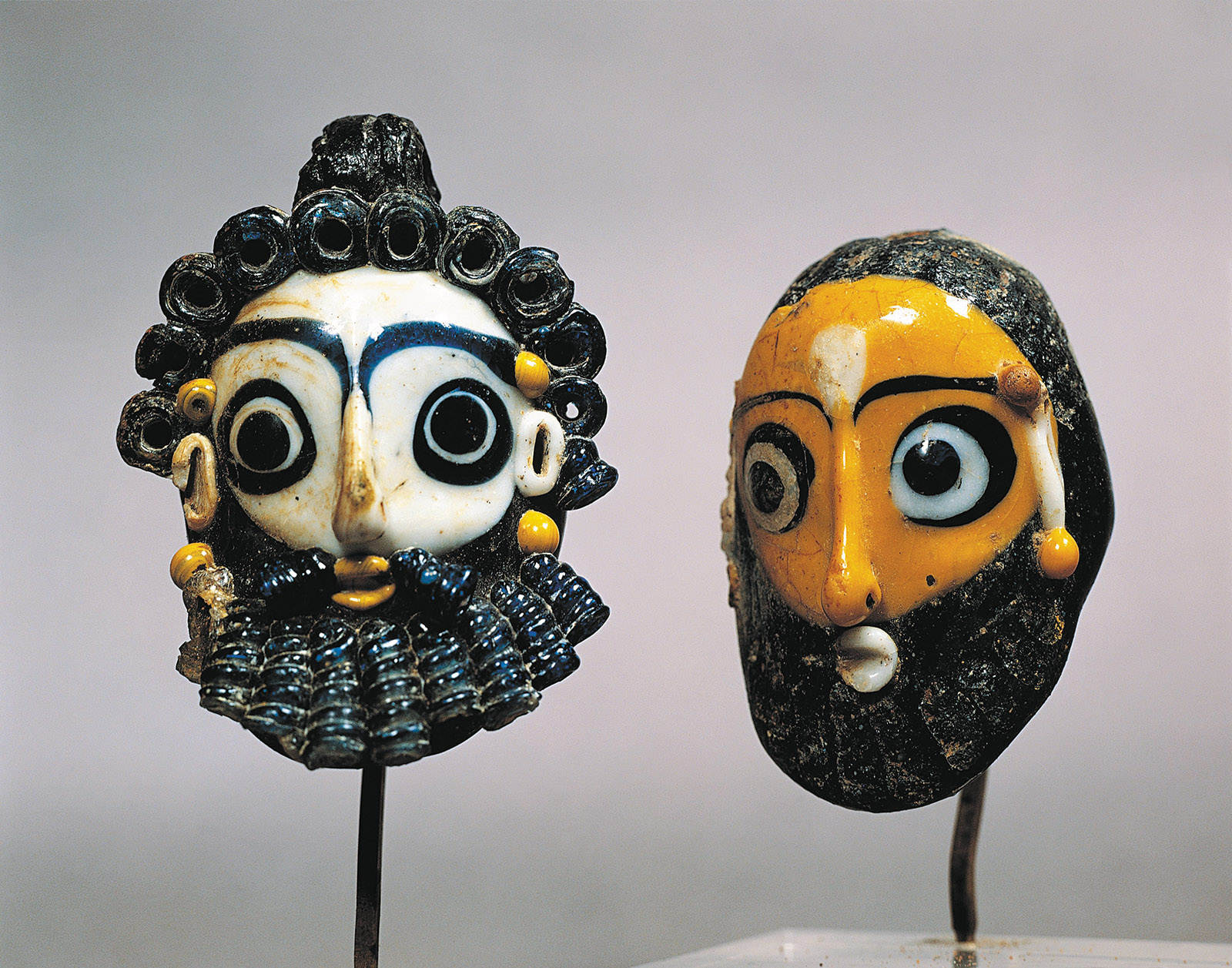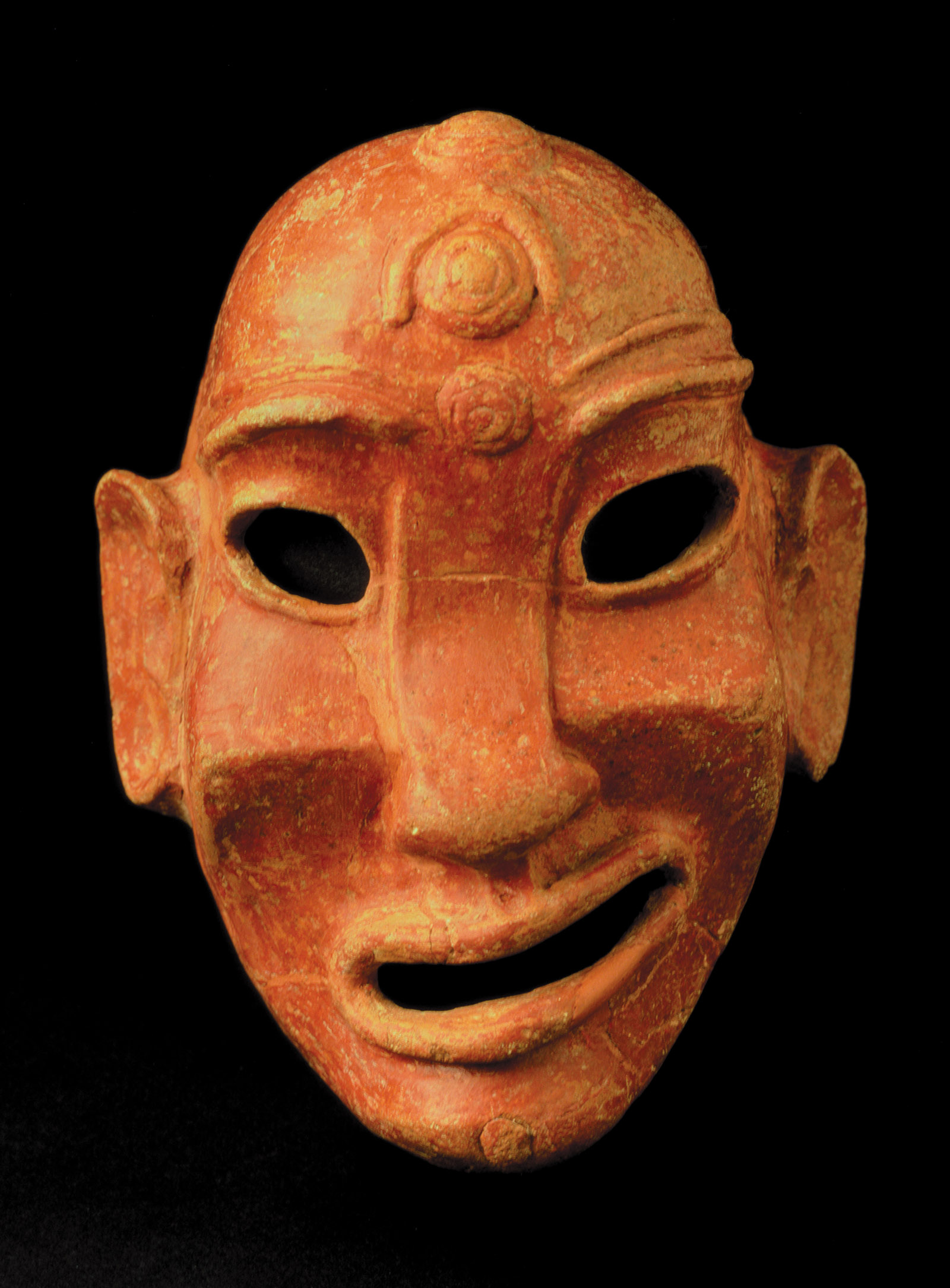In her book In Search of the Phoenicians Josephine Quinn has opened up the history of a people who have been thoroughly familiar to European scholars since the nineteenth century, when Ernest Renan traveled to the Near East to study them. His Mission de Phénicie (1864) drew upon observations he made in 1860–1861 and laid the foundation for a view of the Phoenicians as a nation with a coherent ethnic identity. Others such as George Rawlinson, in his History of Phoenicia (1889), took up Renan’s position, and their work was reinforced by the earlier decipherment of the Phoenician alphabet by the numismatist Jean-Jacques Barthélémy in the mid-eighteenth century. The language seemed to provide a philological foundation for the unifying vision of Renan and his successors.
Quinn has taken aim at the entire edifice of Phoenician history and culture. In doing so she has raised major questions of ethnic identity as well as shown modern claims to a presumed cultural heritage from antiquity to be part of a political agenda. Her work is richly and authoritatively documented and admirably free of ideological prejudices. At the end there can be no doubt that Quinn’s argument is decisive: there is scarcely anything left of the supposed Near Eastern nation that colonized North Africa and western Spain.
The demolition that Quinn has carried out has its immediate origins in a great exhibition, “I Fenici,” at the Palazzo Grassi in Venice in 1988. The organizer of the exhibition (which was sponsored by Fiat) was the Semitic philologist Sabatino Moscati, who had posed two decades earlier the awkward and still-unanswered question of who exactly the Phoenicians were. At Venice he tried hard to give publicity to what they did, and above all to suggest that they were really one people. Quinn aptly quotes a witticism that was current at the time: “Sabatino Moscati invented the Phoenicians, Gianni Agnelli manufactured them.”
There is no doubt that the Phoenicians, whose origins go back to the ancient Lebanese cities of Tyre and Sidon in the late second millennium BC, were prominent in the ancient Mediterranean. They were famous for commerce and seafaring. Athough their language was Semitic, the shape of their letters has been forever associated with the emergence of the Greek alphabet. As merchants they turned up in remote and unrelated places such as Delos, Carthage, and Cádiz, and their tireless god Melqart was transformed into the Greek Heracles, with European wanderings in Spain and France above all, where traces of his legendary travel can still be detected. As Quinn reminds us in the arresting opening of her book, the Phoenicians were even thought to have reached Ireland and to have become the progenitors of the Irish.
In the Near East the Lebanese of the twentieth century AD looked to the Phoenicians as the ancestral people from which they came, not least in order to assert that their identity is wholly distinct from that of the Arabs. This reconfiguration of the region had been encouraged by the French Mandate from 1920 onward, which issued programmatic Lebanese coinage with a Phoenician ship and a cedar tree. These were the public images with which the Mandate launched the concept of Greater Lebanon as a “Switzerland of the East,” a place that was multilingual, attractive for tourism, and hospitable to business and banking enterprises. The new Lebanon, with its distinctly Phoenician and non-Arab character, lingered on until the catastrophe of the civil war that erupted in 1975.
Quinn outlines the systematic arrogation of the claims of the Neo-Phoenicians by extreme right, anti-Arab Christians, of whom the most conspicuous were the so-called Phalange (al-Kata’ib). This struggle brought an end to the cosmopolitanism for which Beirut in particular had become both cherished and renowned. Meanwhile another wave of Phoenician enthusiasm was taking hold in Tunisia, a nation that sheltered the remains of the great ancient city of Carthage with a totally different but no less influential history of Phoenician settlement.
Modern attempts to proclaim “Lebanon First” still have a disquieting echo in nationalist propaganda today, which mirrors the uneasy relationship between the Lebanese and their Arab neighbors, a relationship with deep roots in Lebanese consciousness of their Phoenician origins. At the present time a bewildering profusion of faiths and political groups gives Lebanon a diversity that in a strange way evokes the very lack of cohesion that characterized the Phoenicians themselves throughout antiquity. Who were these people, so widely dispersed across the Mediterranean world and invoked as ancestors by peoples as diverse, and obviously unrelated, as the Carthaginians and the Irish, the Lebanese and the Tunisians?
Through the reflections of Renan in the nineteenth century on the nature of states and ethnic identities—reflections that underlay his reports from Phoenicia—we can see the thread of Phoenician settlements and influences stretching across several millennia and vast spaces from Dido’s North Africa to Heracles’s Spain. The modern state of Tunisia looked to the Phoenicians as antecedents as recently as Habib Bourguiba’s time in power from 1956 to 1987. And Phoenicia, which did not exist as a definable region until the Roman Empire (although great Phoenician port cities, such as Tyre and Sidon, did), comes into the historical record much later than the Phoenicians themselves.
Advertisement
Quinn is even able to write convincingly about “the invention of Phoenicia,” although who did this and when is by no means clear. But she can anchor this invention in the emergence of the modern Near East. The self-consciousness of the Lebanese as non-Arab (“there are no camels in Lebanon”) went hand in hand with the promotion of the Phoenicians as a people. Quinn’s book is a bracing exploration of what we don’t know about them. It demonstrates how explosively the conjunction of their fame with our ignorance can spawn arguments for the construction of nations and ethnic groups in search of prestigious ancestors.
Quinn has therefore, in a timely and persuasive way, tapped into the modern mania for Phoenician culture, or what has been called in French phénicité, which Moscati unleashed through his great exhibition in Venice in 1988. This was arguably the single most important shift in Phoenician studies since Renan. Moscati’s comprehensive treatment of Phoenicians, their settlements, and their artifacts not only provides the background for Quinn’s book but justifies the relentless incredulity that she has brought to the whole subject. Her work succeeds in proving that the Phoenicians were not a people or a community. She strips away the fictional premises of “Lebanon First” and Bourguiba’s Tunisia, and she has delivered a powerful lesson for many who feel free, usually for ideological reasons, to speculate on nations and nativism.
Phoenice, under that name (not “Phoenicia”), became a Roman province within Syria at the end of the second century of our era. This was due to the influence of the ruling Severan dynasty, which had links with the city of Emesa, home of Julia Domna, the wife of the emperor Septimius Severus. The city for still-unknown reasons identified itself as Phoenician. Unlike the famous Phoenician cities of earlier times, Emesa was not a port, but it serves as a reminder that the very word “phoenix” (Greek phoinix) evokes a date palm tree. The tree would have been familiar in Emesa, and as a symbol it served the Phoenicians who colonized Carthage as a reminder of their distant origins. But its appearance on their coinage was more a visual rendering of the word “phoenix” than an allusion to some remote region in Palestine or Syria. Julia Domna’s pride in Emesa had nothing to do with Carthage or with trade, either in her day or long before. Phoenice entered the Roman Empire neither as an ancient commercial people nor a territory, but simply as the place where the palm trees grew. Roman Phoenice had no connection, either at that time or before, with Carthage.
Because of Hannibal’s confrontation with Roman power, Carthage gave weight to the mythical narratives of Phoenician expansion across the Mediterranean. The tragic suicide of Dido as Aeneas left her to fulfill his divine mission to move on to Italy and found Rome is an integral part of the story of the Roman state. But it says nothing about Phoenicians, nor does the bizarre culture that had bloomed by the Bay of Carthage. The magnificent location of the city, as anyone who has been there will know, could easily have fostered dreams of empire across the water. But the customs that have been revealed in Carthage have nothing to do either with Phoenicians elsewhere or, for that matter, with the territorial ambitions of the city.
Carthaginians are probably best known for sacrificing children, a practice that is documented in over thirty Greek and Roman authors and by archaeological research on sanctuaries in Africa and elsewhere that reveal the remains of infants. Their burials are commemorated on inscriptions as an expression of thanks to Baal Hammon and his consort Tinnit. Attempts to explain away these burials by postulating premature deaths are indefensible, as Quinn rightly observes, in view of the improbability of such extensive infant mortality at the tender ages indicated by the osteological evidence. The deaths of such large numbers of children can only be explained by the practice of ritual sacrifice known to us from the ancient sources. This Carthaginian custom spread outside North Africa into Motya off the coast of Sicily and into Sardinia. But it is utterly without parallel in the Phoenician cities of the Near East, and equally unknown to the Phoenician diaspora west of Sardinia.
Advertisement
The funerary sanctuaries at Carthage and elsewhere have traditionally been designated “tophets,” because modern scholars, facing the hard evidence, took refuge in a name from the Hebrew Bible for a place in the Valley of Ben Hinnom in Jerusalem where the residents killed their children and made them “pass through the fire.” This is the place best known to modernity under the name “Gehenna,” which is often translated as Hell. Unfortunately the word “tophet” caught on, quite wrongly, as a way to provide a veneer of academic respectability to a Carthaginian practice that had no known name. Such an onomastic sleight of hand is a powerful example of the way in which an older generation of scholars struggled to make the unmentionable mentionable. One has simply to face the reality of what was going on. Talking about tophets at Carthage is yet another mistaken effort to link the Phoenicians of the West with the Near East.
The unsavory but by now incontestable habit of killing children in tribute to the gods was clearly not an ancestral Phoenician tradition that arrived with colonization. It sharply segregates the peoples of the Near East from those who used a variant of the same Semitic language in the orbit of the Carthaginians. For the Romans such people spoke Punic, which is a Latin way of saying “Phoenician,” although “Punic” lacks the resonance of the Greek word phoinix, which not only denoted a palm tree but the mysterious bird called the phoenix, as well as a deep red dye.
So multivalent is the word phoinix that for reasons that remain, as far as I know, still unexplained, the Greek verb phoinikizein serves to designate performing cunnilingus. The implication is that this activity was associated with Phoenicians, though it is by no means clear which Phoenicians are meant or where. Sexual practices were sometimes connected with a particular place in antiquity, as was another intriguing verb, lesbiazein, for what was done on the island of Lesbos. Curiously this does not refer, as one might expect, to sapphism but to fellatio.
In any case the very name of the Phoenicians is proof enough, through its breathtakingly divergent senses, of the lack of coherence among the many peoples to whom it was applied. “Punic” as an identifier was far less flexible as an adjective, which generally evoked Carthaginians and their faithlessness (Punica fides). “Phoenician” by contrast suggested Tyre and Sidon, but no region and no community or nation.
In fact the name “Phoenician” was so infinitely flexible, and certainly so ill defined, that when Julia Domna’s Syrian home city of Emesa became identified with Phoenice, this could readily allow the Greek writer Heliodorus, probably well over a century later, to sign off at the end of his vast novel about Ethiopians by calling himself simply “a Phoinix from Emesa.” His world could hardly be more different from the old Punic kingdom in North Africa, and his compatriots had nothing whatever to do with the people who had lived there nor, for that matter, with the residents of Tyre and Sidon centuries earlier.
But this is not the whole story, because the Phoenician divinity Melqart turns up prominently even farther west in the Mediterranean world, at Cádiz and from there all the way into France. He is identified by his Greek name, Heracles. The travels of this peripatetic divinity as far as the Atlantic Ocean undoubtedly tell us much about the commerce of merchants who sailed west from Near Eastern ports, but the mythology of Heracles in Spain and France depends entirely upon Greek narratives and local survivals of alien traditions in names and physical remains. The story of Heracles’s path across Europe into Switzerland and then down into Italy has been thoroughly traced in recent years,* and it sheds light on the continuing evolution of Phoenician legends well into the imperial period. But none of this shows, as Quinn is well aware, that the Phoenicians ever were, or even were imagined to be, a coherent nation or people.
Quinn ends her work with a bravura chapter that recalls the supposedly Phoenician origins of the Irish, with whom her book had paradoxically begun. On the basis of a sixteenth-century account of a dinner party hosted by the last abbot of St. Augustine’s of Canterbury before Henry VIII dissolved the monastery, Quinn recounts the views of the abbot and his guests about the origins of nostra Britannia and its people. After the separation of Britain from Roman France, the first foreigners to arrive in the island were, we are told, the Phoenicians.
It would be hard to find any substantial basis for such a nationalist, anti-European perspective, apart from a single tile in Wales that bears a Roman name in Punic, but “fictive Phoenicians,” as Quinn calls them, became increasingly visible in Britain well into the nineteenth century. They proved useful in constructing a distinct British identity. By 1893 George Rawlinson could maintain that the Phoenicians were “the people who of all antiquity had most in common with England and the English” as well as “the first who discovered the British islands.” By then Stonehenge had already been claimed as a Phoenician site. Before long the president of the Royal Institution of Cornwall, which was proud of an imagined link between the Cornish and the Carthaginians, could assert that the Phoenicians had actually introduced clotted cream to Britain.
Frederic Leighton’s romantic painting Phoenicians Bartering with Ancient Britons (1894–1895) shows an astonishing passage from the world of the pre-Raphaelites to a nation of new Phoenicians. It is to Quinn’s great credit that after so successfully explaining away the Phoenicians as a people or nation, she is able to build upon the modern examples of Phoenician mania with which she started, as in Ireland or Lebanon, to create a far more complex account of contemporary Phoenicianism from the sixteenth century onward.
Quinn’s narrative is both exhilarating and cautionary because it shows how antiquity can be reimagined to promote ideological prejudices. One of the many lessons of her work is that ancient history is rarely stable, and dogmas that were current in both the remote and proximate past are constantly subject to correction or rejection. Even now it remains hard to sort out “fictive Phoenicians” from all the others. The Phoenicians have not been banished from the historical past, but they have been dissolved into diverse and innumerable peoples who bore their name and spoke their language, yet had no region of their own in either East or West.
In an eloquent conclusion to her book Quinn draws from her complex argument what the problem of the Phoenicians might reveal for the large and much-debated question of ethnic identity. She rightly claims that in recent decades too little attention has been paid to the concept of identity itself: “We tend to ask how identities are constructed, vary, and change, not whether they exist at all.” She contrasts personal identity as the consciousness of an individual with a broad collective identity. Nations clearly display a collective identity, although Quinn goes so far as to label such categories of identity as “fundamentally arbitrary.” Here one might legitimately quarrel with her. She faults the whole idea of collective identity at the level of a people, culture, or nation. But it is not unreasonable to claim that for the ancient Mediterranean world scholars have greatly distorted the picture, by concentrating on a small number of unusual and unusually literate societies.
By arguing that there is no good evidence that the people we call Phoenicians identified themselves as a single people or ever acted as a “stable collective,” Quinn is certainly not denying the existence of Phoenicians or that various persons called themselves Phoenician. Quite the contrary. What people call themselves speaks to us memorably about their traditions, their aspirations, and their hopes. But it may not tell us anything at all about their history.
This Issue
June 28, 2018
It Can Happen Here
Danse Macabre
Brave Spaces
-
*
See my “On the Road with Heracles,” a review of Graham Robb’s The Discovery of Middle Earth, in these pages, February 20, 2014. ↩





